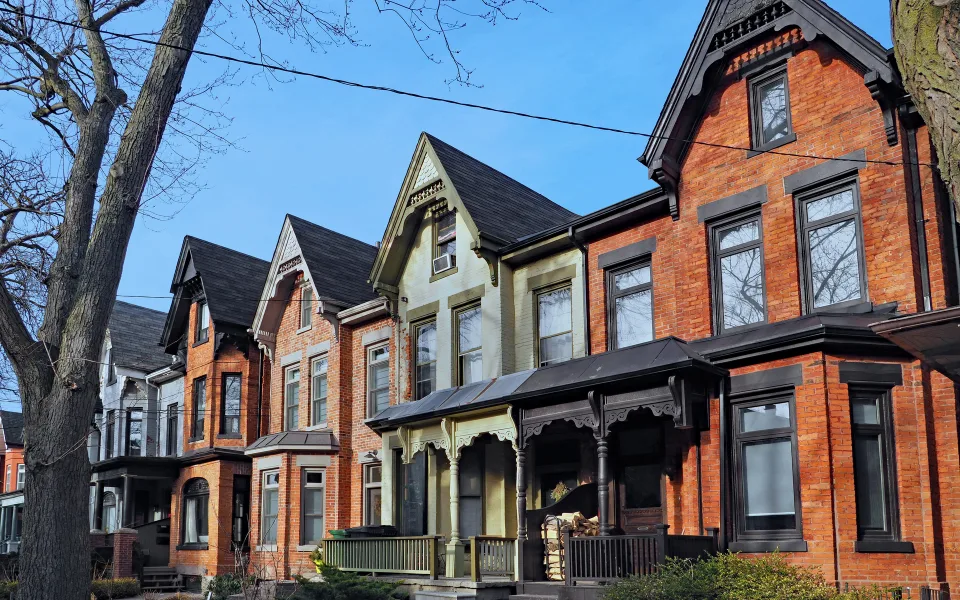Renovating a historic home is an exciting, rewarding endeavor, especially in Toronto, where many homes reflect architectural heritage and character dating back over a century. These homes—often Victorian, Edwardian, and even Craftsman styles—exude charm but require a sensitive approach to bring them up to modern standards without sacrificing their unique details. For homeowners considering this ambitious project, navigating historic renovations involves understanding the unique challenges and meticulous planning to preserve a home’s essence while introducing modern comforts.
In this comprehensive guide, we’ll walk you through the crucial considerations and steps for renovating a historic home in Toronto, from assessing the structure to choosing the right materials, permits, and ensuring that your renovations stay true to the home’s original charm.
Table of Contents
- Understanding the Value of Historic Homes in Toronto
- Assessing the Condition: Structure and Foundation
- Navigating Permits and Heritage Restrictions
- Preserving Architectural Details
- Modernizing Key Spaces: Kitchens and Bathrooms
- Adding Modern Extensions Without Compromising Charm
- Energy Efficiency Upgrades for Historic Homes
- Selecting the Right Toronto Contractor for Your Historic Renovation
- Budgeting for Historic Home Renovations
- Preserving Heritage, Embracing Modern Living
1. Understanding the Value of Historic Homes in Toronto
Toronto and the Greater Toronto Area (GTA)—including neighborhoods like Markham, Vaughan, North York, Mississauga, and Scarborough—boast a variety of historic neighborhoods. Areas like Cabbagetown, The Annex, Rosedale, and Leslieville are known for their stunning heritage homes, often built between the late 19th and early 20th centuries. These properties are rich in architectural details, with features like intricate woodwork, stained glass windows, and classic exterior facades that are rarely found in modern construction.
For many, preserving these historic homes is about maintaining a piece of Toronto’s architectural legacy, which not only holds sentimental value but can also increase the home’s market value. However, with this charm comes a responsibility: careful, respectful renovations that stay true to the home’s origins.
2. Assessing the Condition: Structure and Foundation
The first step in any renovation, especially for a historic home, is a thorough inspection of the property. Older homes often have unique structural challenges due to their age, building techniques, and materials. Common issues to check for include:
- Foundation Issues: Settling, cracks, and moisture damage are prevalent in older homes, especially if the original foundation materials include brick or stone, which require special restoration techniques.
- Roofing: Historic homes often have unique rooflines or original roofing materials like slate. Assess the roof for structural integrity, water damage, and potential for restoration.
- Electrical Systems: Many older homes were not built with modern electrical needs in mind. Ensure that the wiring is up to code, as original wiring can pose safety risks.
- Plumbing: Outdated plumbing materials, such as galvanized steel pipes, can lead to low water pressure and potential leaks. Replacing these with modern materials will be essential.
- Asbestos and Lead: Homes built before the 1980s may contain asbestos insulation or lead-based paint, both of which are hazardous and require professional removal.
At David Reno, we recommend working with a qualified contractor who specializes in historic renovations. Our team provides the expertise needed to assess each aspect of the structure and develop a comprehensive renovation plan tailored to preserve and enhance historic homes.
3. Navigating Permits and Heritage Restrictions
Toronto takes pride in its historic properties, and many homes are protected under the Ontario Heritage Act. If your home is designated as a heritage property, you’ll need to navigate specific regulations and obtain permits from the Toronto Heritage Preservation Services. Here are the key considerations:
- Understanding Heritage Designation: There are two main designations—“listed” and “designated” heritage properties. Designated properties have stricter guidelines and require all alterations to be approved to ensure they preserve the historical integrity.
- Applying for Heritage Permits: For designated properties, any exterior changes (such as window replacements, façade updates, or expansions) require a heritage permit. These applications can take time, so factor this into your project timeline.
- Maintaining Historic Character: Even if a permit isn’t required, many Toronto homeowners choose to work with the heritage guidelines to ensure the renovations stay true to the home’s original style, preserving its character for future generations.
Navigating the permit process may feel daunting, but David Reno can help streamline this by handling all applications and approvals, ensuring compliance with heritage requirements.
4. Preserving Architectural Details
One of the greatest challenges in renovating historic homes is preserving architectural details that make these homes unique. The original craftsmanship—such as wood moldings, fireplaces, stained glass windows, and original flooring—is a defining feature of Toronto’s historic homes. Here’s how to approach preserving these elements:
- Restore Rather than Replace: Restoration is often preferable for historic features, whether it’s sanding down original floors or repairing damaged wood moldings. This approach retains the authentic character of the home while modernizing it where needed.
- Replicate Missing Details: In cases where certain architectural elements are damaged beyond repair or missing, replicate them using the original materials. This might mean sourcing similar wood types or custom-crafting moldings to match the original design.
- Hire Skilled Craftsmen: Restoring intricate woodwork, plaster, and other heritage details requires specialized skills. At David Reno, we work with craftsmen who have the experience to seamlessly blend old-world charm with modern updates.
5. Modernizing Key Spaces: Kitchens and Bathrooms
While historic homes have a timeless appeal, modern homeowners expect updated amenities, especially in kitchens and bathrooms. Here’s how to introduce modern functionality without compromising the charm of a historic home:
- Selecting Period-Appropriate Fixtures: Choose fixtures that complement the home’s style. For example, clawfoot tubs, vintage faucets, and apron-front sinks can bring modern functionality while keeping the aesthetic consistent.
- Smart Layout Adjustments: Open-concept spaces are popular in modern home designs but can be challenging in historic homes with compartmentalized layouts. If removing walls isn’t possible, consider ways to visually open up spaces, like adding glass doors, or strategically using mirrors and lighting.
- Incorporating Modern Technology: Historic homes can be retrofitted with smart technology in subtle ways. Integrated lighting, hidden speakers, and efficient HVAC systems can be seamlessly added to the home without detracting from its historic charm.
David Reno’s team of designers can help you select and install period-appropriate fixtures that blend perfectly with the original style, ensuring a cohesive look throughout the renovation.
6. Adding Modern Extensions Without Compromising Charm
In Toronto’s competitive real estate market, home additions are often a must for expanding living space. With historic homes, these additions must be planned with sensitivity to the existing structure:
- Choose Complementary Materials: When adding an extension, use materials that match or complement the original home. For example, brick or stone that matches the original can create a seamless look.
- Consider a “Light Touch” Addition: Some historic homeowners opt for glass additions that highlight the original structure rather than overshadowing it. Glass conservatories or kitchen extensions maintain the home’s look while offering additional space.
- Blending Old and New: A skilled Toronto contractor, like David Reno, can create a harmonious blend between modern additions and historic elements. By working with the right design principles, your addition can enhance the home without diminishing its character.
7. Energy Efficiency Upgrades for Historic Homes
Older homes tend to be draftier and less energy-efficient. Making your historic home more energy-efficient not only improves comfort but also reduces heating and cooling costs:
- Insulation and Draft Sealing: Adding insulation to attics, basements, and walls can help maintain temperature without affecting the structure. Consider draft-sealing original windows with modern, clear weather-stripping materials.
- Energy-Efficient Windows: Retrofitting windows is often necessary. Double-paned glass can be installed in original frames to improve efficiency while maintaining the home’s look.
- Efficient HVAC Systems: Historic homes weren’t built with central heating and cooling in mind. Installing a modern HVAC system, including a ductless mini-split, is an effective way to provide comfort without invasive ductwork.
8. Selecting the Right Toronto Contractor for Your Historic Renovation
Choosing a contractor with expertise in historic renovations is essential to achieve the best results. Look for a team with:
- Experience in Historic Renovations: A contractor familiar with heritage properties will understand how to balance modernization with preservation.
- Understanding of Local Regulations: Your contractor should navigate heritage permits, understand Toronto’s bylaws, and know how to work within them.
- Skilled Craftsmen: Your contractor should work with tradespeople skilled in restoring and replicating heritage features, from woodwork to custom windows and doors.
David Reno brings years of experience in restoring and renovating Toronto’s most treasured historic homes. Our approach focuses on detail, craftsmanship, and sensitivity to the home’s original design.
9. Budgeting for Historic Home Renovations
Renovating a historic home in Toronto often requires a flexible budget, given the unknowns that may arise with older properties. Here’s a quick overview:
- Allocate for Unexpected Repairs: Historic renovations frequently uncover hidden issues, such as structural damage or outdated plumbing. Build a contingency fund (around 15-20% of the project cost) to cover these surprises.
- Prioritize Restoration Over Replacement: While restoring original features can sometimes be costlier than replacing them, it often pays off in terms of aesthetics and property value.
- Consider Energy Rebates: Toronto homeowners may qualify for grants or rebates when upgrading for energy efficiency. Programs like the Canada Greener Homes Grant can help offset some of the costs for insulation, windows, and more.
Preserving Heritage, Embracing Modern Living
Renovating a historic home in Toronto is a journey that requires thoughtful planning, respect for architectural integrity, and a team of skilled professionals. From preserving intricate details to upgrading functionality, a well-executed historic renovation combines the best of both worlds—classic charm and modern comfort. By partnering with an experienced Toronto contractor like David Reno, you can transform your historic home into a masterpiece that’s ready for the next century, preserving its story and beauty for generations to come.
Whether you’re planning an interior remodel, a seamless addition, or a full-scale renovation, our team at David Reno is ready to help you realize your vision. With our expertise in historic home renovations across Toronto, Markham, Vaughan, North York, Mississauga, and Scarborough, we ensure each home is treated with the care and respect it deserves. Let’s preserve the charm and heritage of your historic home while making it a perfect fit for modern living. Contact us today!

